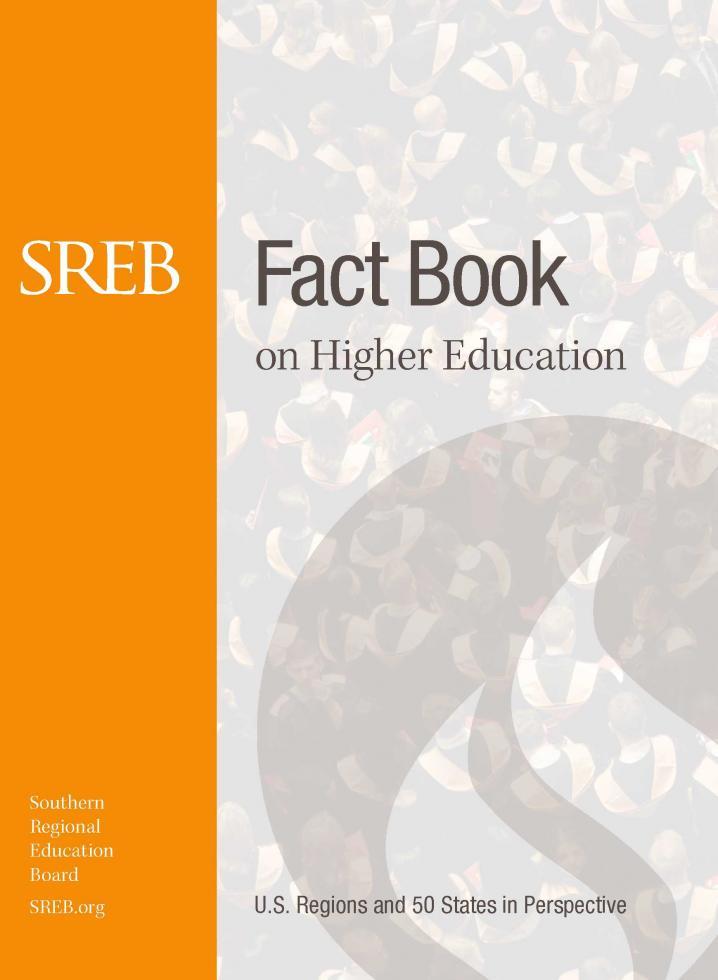College Attainment Continues to Climb, Slowly
Trends are promising. Affordability is a challenge.
Despite recent declines in undergraduate college enrollment, trends in high school graduation and K-12 enrollment look promising for continued gains in education attainment rates, according to the latest Fact Book on Higher Education from the Southern Regional Education Board.
In the SREB region:
- Thirty-seven percent of working-age adults held an associate degree or higher in 2015, up from 35 percent in 2009 but lower than the U.S. level of 41 percent.
- College enrollment declined 4 percent between 2010 and 2015, less than the national decline of 7 percent.
- K-12 enrollment is growing, and only the SREB region expects an increase in the number of high school graduates by 2031.
- The high school graduation rate was up to 86 percent in 2015, from 82 percent in 2012.
- Progression rates in college rose 5 percentage points over the last 10 years to 77 percent for full-time bachelor’s degree-seeking students.
Keeping college affordable presents a challenge for students and
for state goals to increase education attainment levels.
Increases in tuition and fees outpaced income growth in 2015-16.
Tuition and fees at public four-year colleges in the SREB region
required 13 percent of annual family income for those in the
middle income range and 46 percent of income for low-income
families.
“College degree rates have not increased as quickly as
policymakers hoped they would when they set goals earlier this
decade, but we see signs of progress,” said Susan Campbell
Lounsbury, SREB director of education data services. “If
states can loosen the stranglehold of high college costs, they
will help more of their residents earn the credentials that lead
to good jobs and stronger economic development.”
SREB Fact Book on Higher Education
The Fact
Book provides comparable data and
analysis on a comprehensive set of measures. The goal is to help
state and higher education leaders track and guide progress
toward their goals for postsecondary attainment.
Find essays, spreadsheets, charts and graphs for 50 states,
the four U.S. Census regions and the United States as a
whole.
Tables updated continually online include:
- Tuition and fees
- State financial aid funds
- Enrollment and degrees by type of college and degree
- Faculty and administrator salaries
- Educational attainment
- State and federal funding for higher education
- College revenues and expenditures
All Fact Book tables >
Featured Facts for each SREB state
Individual booklets focus on postsecondary statistics for each SREB state and highlight how they compare to U.S. and SREB averages.
State Featured Facts >
 The SREB-State Data Exchange, a
cooperative effort of SREB and statewide higher education
governing and coordinating boards, publishes up-to-date
statistics on postsecondary education, including information by
institutional category. Contact: Susan Campbell Lounsbury,
SREB Director of Education Data Services, (404) 879-5546
The SREB-State Data Exchange, a
cooperative effort of SREB and statewide higher education
governing and coordinating boards, publishes up-to-date
statistics on postsecondary education, including information by
institutional category. Contact: Susan Campbell Lounsbury,
SREB Director of Education Data Services, (404) 879-5546
The Southern Regional Education Board, a nonprofit,
nonpartisan organization, works with states to improve
public education at every level. Member states are Alabama,
Arkansas, Delaware, Florida, Georgia, Kentucky, Louisiana,
Maryland, Mississippi, North Carolina, Oklahoma, South Carolina,
Tennessee, Texas, Virginia and West Virginia.
Contact: Beth Day,
SREB Communications Director, (404) 879-5544

